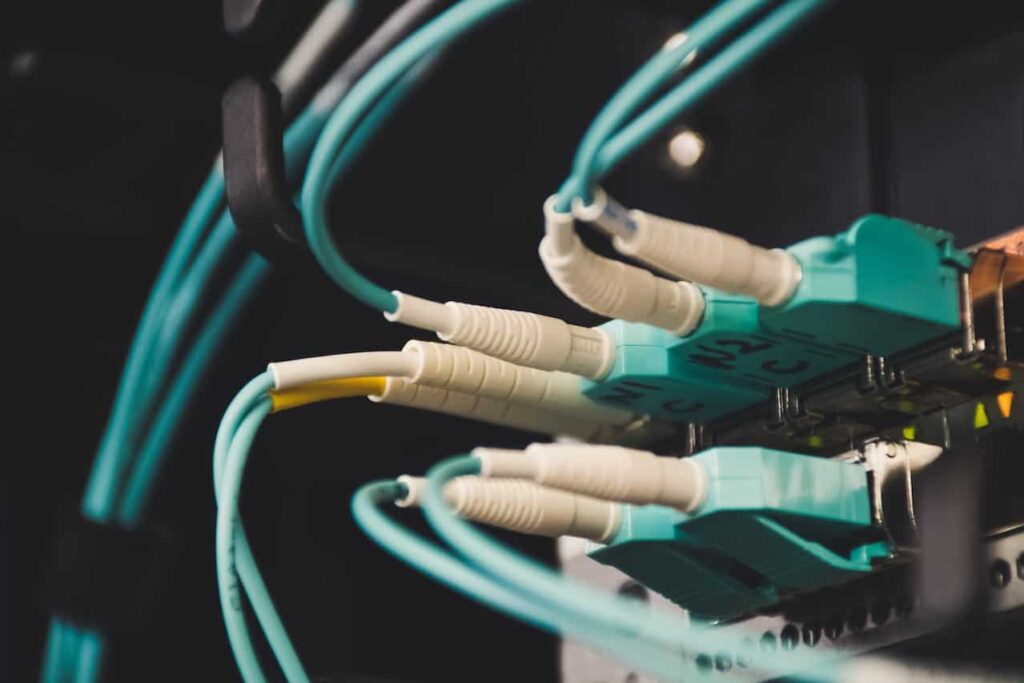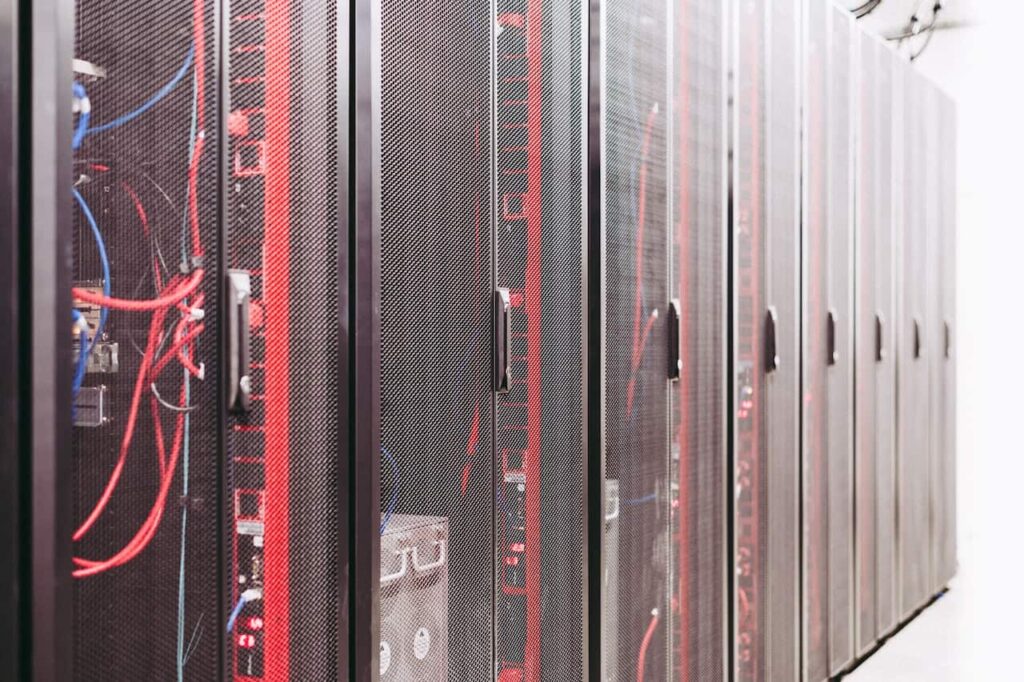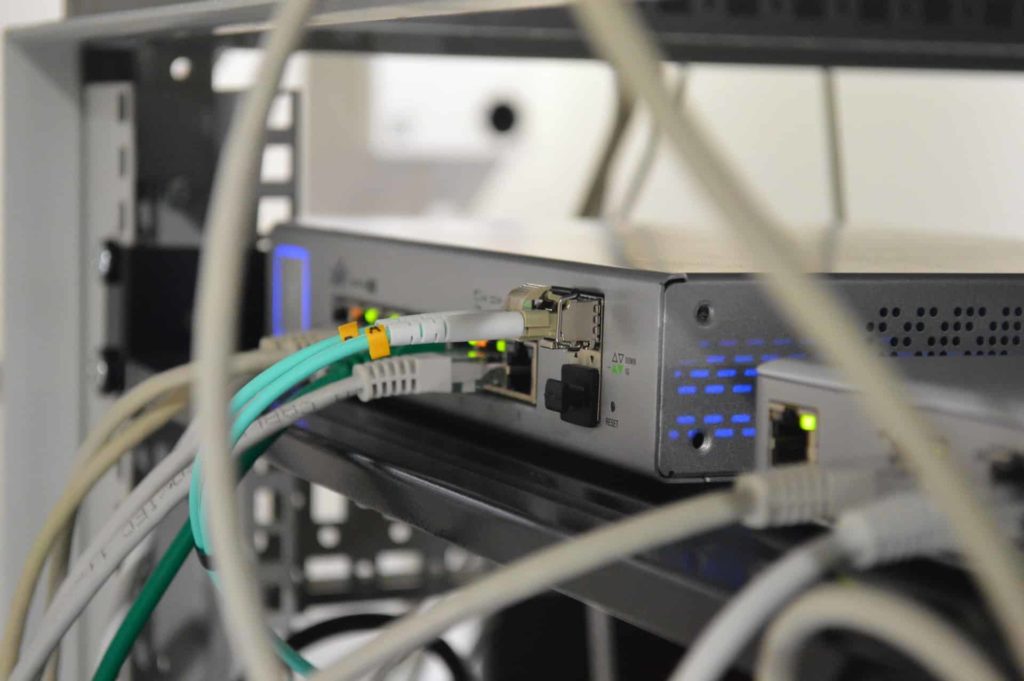If you want a successful installation for your data center, you need to understand fiber polarity and how to connect a system. There is no “correct” way to approach fiber polarity, as every manufacturer has different standards. If you want to know how to implement a fiber polarity system with pre-terminated cabling, here are a few essential tips that you will want to know.
What Is Fiber Polarity?
In the most basic form, polarity ensures that the transmitter talks to a receiver. Fiber polarity will define the direction of flow, such as the electrical current or magnetic field. With fiber optics, polarity is always directional. The light signals travel through a fiber optic cable from one end to another. The fiber optic transmits signal link at the end of the line needs to match the corresponding receiver at the opposite end.
While that may seem simple, if you do not fully understand polarity, you could experience problems with your installation. It is more than flipping around a pair of simple connectors. Today, fiber is becoming the top choice for high-speed transport. With the number of connections and fibers increasing, data center installers must understand polarity to have a successful result.
Do you help with finding the right technology for your business? At C&C Technology Group, we have the solutions for your data needs!
The technological world is more complex. According to TIA standards methods, there are simple components with similar labels, such as Type A, Type B, and Type C. While they may have the same name, these components can be used in various ways. It can be challenging for anyone to understand how these components interact with each other. Over the years, there have been issues with switching general fiber polarity, orientation, end-face alignment, gender, and pinning. All of these factors can impact polarity.
While those issues are always a concern, let’s focus on the basic rules of fiber polarity.
Related: What Are Fiber Optic Jumpers?

A Simple Method for Achieving Fiber Polarity
These four basic rules allow an installer to use complex and simple channels by implementing a unified system and using standard components. With that, you can connect all the applications in your system.
Take a look at a few basic fiber polarity rules for implementing a system.
All Trunk Cables and Patch Cords Must Be Type B
You will want to ensure that your trunk cables and patch cords are Type B. For those patch cords that have an MPO connector, it must have a female-to-female connection. Along with that, the trunk cables need to be male to male. Some trunk cables need to be extended. You must use a male-to-female Type A trunk extender in those cases.
Use Type A Cassettes in a Duplex Environment
Type A hydras or cassettes are needed at the end of the cable for those who need to convert the MPO trunk to a duplex environment. If you want to ensure that the port mapping remains in the correct configurations, then a Type A cassette is needed at one end, while a Type A alternative can be used at the opposite end. In a traditional harness-type setup, you can also use a hydra for a pre-wired switch. In those cases, you should use a Type A hydra assembly for the switch. When installing the Type A and Type A alternatives, make sure to leave Type A as the highest component in the network’s hierarchy. With that, you will be able to harness the switches.
Related: 10 Tips To Install Fiber Optics the Right Way
Duplex Assemblies Must Align from an End-Face Geometry
When using OS2 connectivity, you will need to ensure the duplex assembler is aligned from an end-face geometry. Failing to do that will result in damage, leaving behind inoperable systems. However, this rule only applies to duplex connectors. OS2 connectors are APC and cannot be mismatched.
Base-8 Uses SR4 Components
The Base- 8 is also known as the SR4. With that in mind, the Base-8 will use SR4 components at all ends instead of the standard Type A. If you want, you can use a Base-8 trunk to connect Base-8 components instead of using a Base-12 trunk. In a few situations, some installers may want to use a Base-12 trunk to lower the variance in the number of components and reduce the operational risk to your facility.
With that, you now know the four basic rules of fiber polarity. You don’t need to learn special tricks or use proprietary components for your installation. There is no need to use these duplex patch cords again. These tips will ensure that you can be confident that every time you plug into the transmitters, you will be able to receive information.
Related: Working with Fiber Optic Cables: 5 Important Safety Measures

Use These Rules for Fiber Polarity
Many people still believe that MPO connectors are a “magic bullet” for an installation. Installers will try to hack components to try to connect their trunk cables and patch cords. However, that rarely leads to successful results. If you follow these rules, you do not need to use those connectors in your system. MPO connectors can pose a risk to your operations because you must verify each one at every end. If you fail to check the connection, you will have a network that doesn’t work or risk damaging your expensive equipment and infrastructure. That is a risk that many people do not want to take.
Using the above basic principles, you can easily address all of those fiber-configuration requirements. In many cases, understanding fiber polarity can be overwhelming for many people. As new applications hit the market, you can be assured that your connections and systems will continue to work.
Do you help implement these basics into your system? At C&C Technology Group, we will help you find the best solutions for your business.
Last Updated on January 20, 2023 by Josh Mahan




